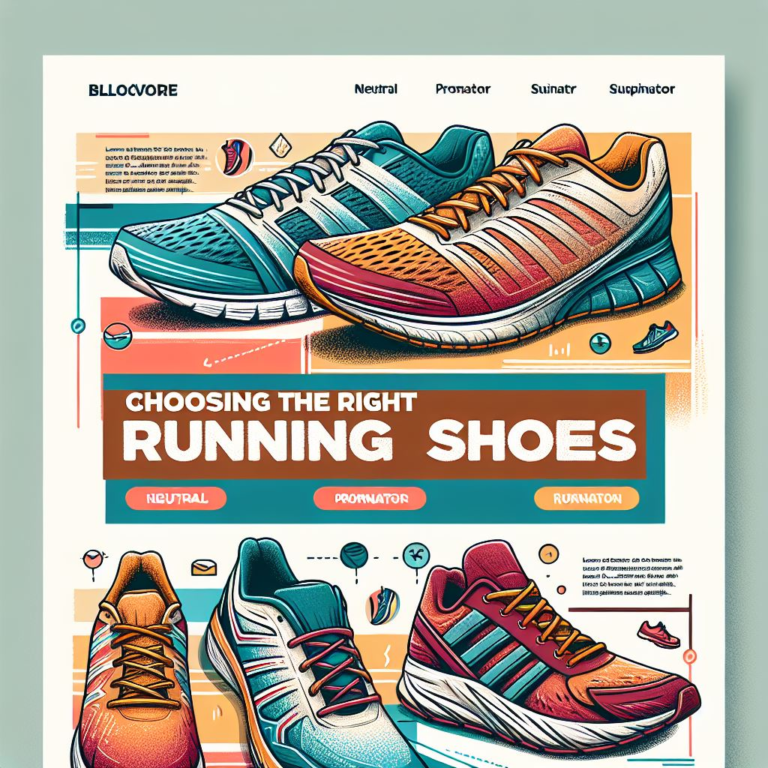
Running shoes are your most important running mate and your “ working tool”.
To close this first quarter of the year, we have decided to make a special article on tips for choosing the right running shoes to start running.
As we mentioned in our first article in the Running section: “How to get started in running: A beginner's guide”, running shoes are your most important running companion and your “ working tool”.
The Importance of Choosing the Right Shoes".
One of the most fundamental decisions a beginning runner will make is the choice of shoes. Selecting the right shoes is not just a matter of initial comfort; it is the foundation on which a successful and enjoyable running experience will be built.
Often, newcomers to running may think that any pair of running shoes will do, but understanding the importance of running-specific footwear can make a significant difference in your progress and enjoyment. Equipment with the right shoes from the start is a crucial investment that sets the basis for a future of satisfying mileage.
Benefits of choosing the right shoe
- Increased comfort when running, making the experience more pleasant.
- Improved performance and efficiency, allowing faster progress with less effort.
- Prevention of common injuries, such as plantar fasciitis or knee pain.
- Increased motivation, by eliminating discomforts that could discourage.
- More regular and progressive training, without interruptions due to physical problems.
- Support appropriate for each type of footprint, adapting to the runner.
Disadvantages of using the wrong shoe
- Uncomfortable running, which can make the activity unpleasant.
- Increased risk of injury, even in the early stages of training.
- Rapid demotivation, especially in beginner runners.
- Training interruption, with pauses of weeks or months due to injuries.
- Slow progress by not being able to maintain a consistent routine.
- Unnecessary physical wear and tear, due to lack of adequate cushioning or support.
Understanding Footprint Type
In order to make the right decision when choosing a running shoe, it is essential to understand the concept of foot strike, also known as pronation.
Pronation refers to the natural inward movement of the foot during running, which helps absorb shock on landing.
There are three main types of footprints:

Neutral pronation: This is the footprint of most runners.
The foot lands on the outer edge of the heel and then glides smoothly inward, distributing the impact evenly.
Neutral pronation can be detected with the naked eye by observing an “S” shaped wear on the sole of the shoe from the outer heel to the big toe and a footprint showing a visible medial arch.
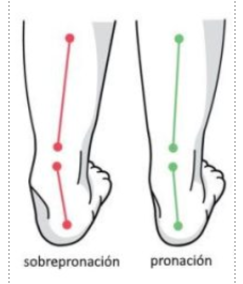
Overpronation: This type of footprint is characterized by excessive inward sliding of the foot, which is often associated with flat feet or low arches .
Care must be taken with this type of stride, as it can contribute to problems such as tibial periostitis.
Overpronation can be detected by observing wear on the sole of the shoe concentrated on the inside edge of the heel and under the big toe and a tread showing almost the entire sole of the foot.

Supination: In this case, this type of footfall is characterized by the foot not sliding inward enough, which creates stress on the outer edge of the foot and is often associated with high arches of the foot.
Care must be taken with this type of stride as it can increase the risk of ankle sprains.
Supination can be detected by observing shoe wear on the outer edge of the heel and outer forefoot, and a footprint with very little connection between the heel and forefoot.
How to distinguish between neutral pronation, overpronation and supination
To identify the correct type of pronation, several methods can be considered:
- The wear test, which involves examining the wear pattern on old running shoes. For example, as discussed above, neutral pronators show “S” shaped wear, while overpronators typically show more wear on the inside of the sole, while supinators show wear on the outside of the sole.
- The wet footprint test, which involves observing the footprint left by the foot after wetting it. As noted above, a footprint that reflects the full arch is typical of neutral pronators, while one with little or no arch suggests overpronation and a footprint with little connection between the rearfoot and forefoot is typical of supinators.
- The professional analysis of the footprint, which is the most accurate method that exists. It is based on the fact that a professional in a running store or a biomechanics specialist observes the way you often run on a treadmill and, based on the professional analysis, determines the type of footprint.
Although all of the above methods are valid, without a doubt the most recommended method because it is mainly a technical method carried out by professionals, either in a specialized store or through a trainer, and with accurate results, is the analysis of the footprint.
For this reason, it is recommended to seek a professional footprint analysis performed by specialists in running stores or qualified trainers.
Choosing the Right Running Shoe for Your Foot Type
Besides taking into account the type of footprint, when choosing your first running shoes there are a number of essential characteristics to take into account:
Correct fit: It is essential to try on your shoes, ideally at the end of the day when your feet are slightly swollen.
Tip: Running shoes should often be half a size or a full size larger than street shoes to allow for expansion of the foot during running. The toe box should offer enough room for the toes to move and spread comfortably, avoiding any feeling of tightness. The midfoot should feel supported but not constricted. Otherwise, blisters, chafing and falling toenails are more than assured.
Adequate cushioning: The cushioning of the shoe is essential to absorb impact and provide comfort. For beginners, moderate to maximum cushioning is recommended to protect the joints.
Tip: The “drop” or height difference between heel and toe is also relevant. For beginners, shoes with a high heel drop (8-12 mm) are recommended as this can reduce stress on the Achilles tendon.
Necessary support: The support of the shoe is directly related to the type of footprint.
Tip: Runners with overpronation may need shoes with stability support, while neutral runners generally do not require additional support.
Types of running shoes by pronation
To follow up on this article, we are going to carry out an extensive analysis of the best shoes for neutral runners, overpronators and supinators.
Para ello nos basaremos en el ranking de las tres mejores zapatillas del año 2024 en cada sección.
Running Shoes for Neutral Pronators
Runners with neutral pronation have an efficient, well-aligned stride. This natural mechanics does not require special corrections, so they can choose from a wide variety of running shoes.
Neutral shoes are characterized by balanced cushioning and do not incorporate rigid corrective structures, as there is no need to modify the stride. Basically, they focus on comfort, lightness and energy return, prioritizing a smooth transition in each stride.
They usually have a uniform midsole and are ideal for both daily training and long distance running, depending on the cushioning level of the model. The greater the cushioning, the greater the capacity for long distance running and the more suitable they are for heavier runners.
Analysis of the best neutral shoes of 2024
🥇 1. Nike Pegasus 41
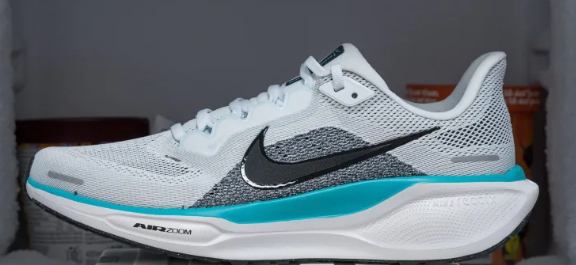
It is perfect if you are looking for a versatile, reliable and comfortable shoe without technical complications.
It is an appropriate shoe for daily workouts, light running, and even the occasional long or fast run.
👤 Runner type:
- Weight: Light to medium (up to 80-85 kg).
- Level: beginners and intermediate.
🏃 Recommended pace:
- Optimal range: 4:30 to 6:00 min/km.
⭐ Key features:
- ReactX cushioning: More reactive and sustainable than previous versions.
- Versatile design: Suitable for both running and active daily use.
- Good durability: For frequent use.
You can see the full analysis at::
🥈 2. Hoka Clifton 9

It's perfect if you're looking for a “cushioned” and soft feel without the shoe being clunky or heavy.
This is one of the most recommended shoes for long distance running. Ideal for marathons and half marathons.
👤 Runner type:
- Peso: Light to medium weight (up to 85 kg approx.).
- Level: Beginners or runners who value comfort.
🏃 Recommended pace:
- Optimal range: 5:00 to 6:30 min/km.
- Perfectas para entrenamientos suaves, recuperación y largas distancias.
⭐ Key features:
- High cushioning without losing lightness
- Meta-Rocker geometry: facilitates the transition from heel to toe.
- Compressed EVA foam: good shock absorption.
You can see the full analysis at: https://runrepeat.com/es/hoka-clifton-9
🥉 3. New Balance Fresh Foam X 880 v14

If you are a slightly heavier runner or are looking for everyday comfort and support, this is a great option.
👤 Runner type:
- Weight: Medium to heavy(up to 90-95 kg).
- Level: From beginner to advanced who wants comfort.
🏃 Recommended pace:
- Optimal range: 5:00 to 6:30 min/km.
- Good for daily training, walking or even light gym work.
⭐ Key features:
- Soft touch Fresh Foam X, ideal for comfortable landings.
- Robust sole with good grip and excellent durability.
- Neutral shoe with an additional stability point, without being corrective.
You can see the complete analysis at: https://runrepeat.com/es/new-balance-fresh-foam-x-880-v-14

Shoes for runners with overpronation
Overpronation occurs when, during running, the foot rotates excessively inward upon impact with the ground. This excessive rotation can misalign the leg and lead to improper load distribution, increasing the risk of injury to the knees, ankles or hips. Therefore, footwear that provides support and motion control is required to correct the foot strike.
For runners with mild to moderate overpronation, stability shoes are the most appropriate choice. This type of shoe is designed to gently guide the foot during stride transition without overly restricting natural motion.
While in cases of severe overpronation or extreme flat feet, a motion control shoe is recommended. These shoes provide a more rigid and structured support, aimed at completely preventing excessive inward rolling of the foot.
Analysis of the best 2024 overpronation shoes
🥇 1. Asics Gel-Kayano 31

It is ideal if you are looking for a shoe with additional support, perfect for medium to heavy runners who train consistently and need pronation control.
They are perfect for long distance races such as marathons and half marathons.
👤 Runner type:
- Weight: Medium to heavy (up to 95 kg).
- Level: Beginner to advanced.
- Gait: Mild to moderate overpronation.
🏃 Recommended pace:
- Optimal range: 4:30 to 6:00 min/km.
⭐ Key features:
- Dynamic Duomax™ Technology: Controls pronation, offering effective support without being too stiff.
- FluidRide™ cushioning: Provides a smooth transition and increased shock absorption.
- Stability and support: Combining stability with cushioning for high mileage runners.
You can see the complete analysis at: https://runrepeat.com/es/asics-gel-kayano-31
🥈 2. Hoka Gaviota 5

It is ideal if you are looking for a shoe with high cushioning and stability to protect your joints and control pronation over long distances.
They are perfect for long distance races such as marathons and half marathons.
👤 Runner type:
- Weight: Medium to heavy (up to 100 kg).
- Level: Beginner to intermediate.
- Tread: Moderate overpronation
🏃 Recommended pace:
- Optimal range: 5:00 to 7:00 min/km.
⭐ Key features:
- J-Frame™ Technology: Provides support to prevent over-pronation without excessive stiffness.
- Maximum cushioning: With a 5 mm drop, it provides a soft and comfortable feel with every stride.
- You can see the full analysis at: https://runrepeat.com/es/hoka-gaviota-5
Puedes ver el análisis completo en: https://runrepeat.com/es/hoka-gaviota-5
🥉 3. Brooks Adrenaline GTS 24
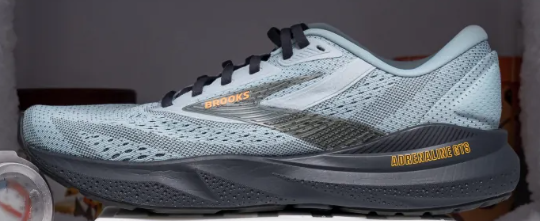
It is ideal if you are looking for a balance between support and cushioning for long workouts or endurance races.
It is an interesting option for medium to heavy weight runners who need pronation control.
👤 Runner type:
- Weight: Medium to heavy (up to 90 kg).
- Level: Beginner to intermediate.
- Gait: Mild to moderate overpronation.
🏃 Recommended pace:
- Optimal range: 4:30 to 6:30 min/km.
⭐ Key features:
- GuideRails™ Technology: Controls excess pronation and promotes natural, unrestricted movement.
- DNA Loft™ cushioning: Ensures great softness underfoot without losing stability.
- Durability and support: Good for long distances without losing comfort.
You can see the complete analysis at: https://runrepeat.com/es/brooks-adrenaline-gts-24

Shoes for Supinated Runners
Supination occurs when the foot does not turn inward sufficiently after impact with the ground. Instead of distributing the impact evenly, the weight falls excessively on the outside edge of the foot. This can increase the risk of injuries such as ankle sprains, stress fractures or discomfort on the outside of the leg.
Unlike overpronation, it is not corrected with rigid structures, but with shoes that provide cushioning and flexibility.
Analysis of the best supination shoes of 2024
🥇 1. Saucony Endorphin Speed 3
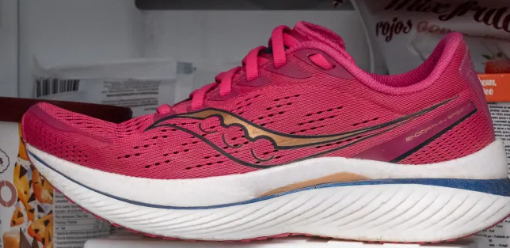
Ideal for light to medium weight runners looking for speed and agility.
Perfect for fast training, racing and half marathon or marathon distances.
👤 Runner type:
- Weight: Light to medium (up to 85 kg).
- Level: Intermediate to advanced.
🏃 Recommended pace:
- Optimal range: 3:45 to 5:15 min/km.
⭐ Key features:
- SpeedRoll™ Technology: Provides a fast and efficient transition, helping runners maintain a fast and fluid pace.
- PWRRUNPB™ cushioning: Offers excellent energy return and cushioning without losing lightness.
- Lightweight and agile design: Ideal for fast runners looking for a reactive and lightweight shoe.
You can see the complete analysis at: https://runrepeat.com/es/saucony-endorphin-speed-3
🥈 2. Brooks Hyperion Tempo
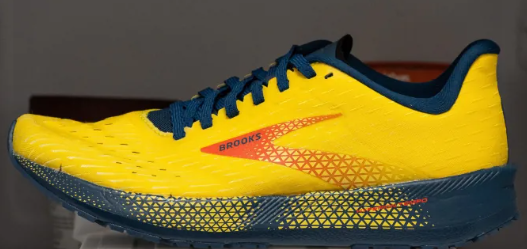
Ideal for light runners looking for a fast and reactive shoe for speed training and short distances.
It is excellent for fast-paced sessions and competitions.
👤 Runner type:
- Weight: Light to medium (up to 80 kg).
- Level: Beginner to intermediate.
🏃 Recommended pace:
- Optimal range: 3:45 to 5:15 min/km.
⭐ Key features:
- DNA FLASH™ cushioning: Offers high energy return and is 20% lighter than other Brooks foams.
- Low profile design: Facilitates a firmer and more controlled landing.
- Lightweight and responsive construction: Provides a fast and responsive feel, ideal for speed training or 5K and 10K races.
You can see the complete analysis at: https://runrepeat.com/es/brooks-hyperion-tempo
🥉 3. Nike ZoomX Vaporfly NEXT% 2

Perfect for advanced runners looking to maximize their performance in long-distance competitions such as marathons.
Perfect for fast runners with proper technique looking to optimize efficiency and reduce fatigue.
👤 Runner type:
- Weight: Light to medium (up to 80 kg).
- Level: Advanced.
🏃 Recommended pace:
- Optimal range: 3:30 to 5:00 min/km.
⭐ Key features:
- ZoomX Technology: Provides ultra-lightweight and efficient cushioning, allowing runners to obtain maximum energy return.
- Carbon plate: Facilitates a boost in each stride and improves efficiency during long runs.
- ZoomX cushioning: Offers incredible energy return without losing comfort, ideal for marathons and ultramarathons.
You can see the complete analysis at: https://runrepeat.com/es/nike-zoom-x-vaporfly-next-2

Conclusion
Choosing the right running shoes is critical for any beginning runner. Understanding pronation and supination, as well as essential shoe characteristics, can make a big difference in the running experience.
It may appear to be complex at first, but the guidance of a professional can greatly simplify the process. Consulting a running coach is key, as they can offer personalized advice on shoe selection based on your individual footprint type, training goals and body mechanics.
In addition, trainers can design customized training plans that are tailored to the beginner's fitness level and goals, working in conjunction with the right footwear to maximize progress and minimize the risk of injury.
Beginners often underestimate the value of professional guidance, thinking they can figure it out on their own. However, a coach offers a personalized approach and expertise that can make a big difference.
As a professional trainer, I can guide you to make sure that the shoes you choose are the best for your running style.
In order to request personalized training, you can write to us and leave your details in the ‘Contact’ section.
And remember ... YOU'LL NEVER RUN ALONE !!
